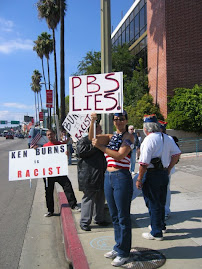Sunday, December 28, 2014
Chicana/o Cheek: The Farm Worker Movement in Ventura County, a chapter introduction
Image by Adam Klamser of the Ventura County Star Free Press, May 1974. Ventura County Deputy arrest United Farm Worker picketer at an east Oxnard strawberry field.
Why wait 5 to 10 years for a work in progress to be shared. What follows is a draft of an introduction of a chapter on farmworker activism for my current book project tentatively titled, Curious Insurgencies: The Chicana/o Movement in Ventura County, California, 1961-1975.
Introduction: Rita Duarte Piñon Medrano
Rita Duarte Piñon Medrano ventured from the state of Chihuahua in Mexico to California circa 1961 with four young daughters in tow. To sustain her family, Rita and the girls traveled the migrant route of agricultural workers of California. They ultimately made Ventura County their home in the City of Oxnard. Working often from dawn to dusk, it was here that Doña Rita witnessed the exploitation of Braceros as the last two hours of the day, from 4pm to 6, she and her co-workers toiled without pay. Growers also refused to provide port-a-johns in the fields and orchards. Hence, men, women, and children were left with no choice but to urinate or defecate in the rows of fruit and vegetables. Field workers were also not provided potable water to drink and soap to wash their hands before eating food during their breaks. Such unsanitary conditions threatened the public health of not only workers but also consumers with cholera, dysentery, and typhoid. If these modern-day helots complained, they risked being fired and returned to Mexico.
Rita Medrano’s life was like the lives of many Mexican immigrant families as they chain migrated to the United States by way of Chihuahua, Guanajuato, Jalisco, Morelia, Oaxaca, Tobasco, Zacatecas, and other states of Mexico to the border towns such as Mexicali and Tijuana to realize a better future for their daughters and sons by way of personal sacrifice, feudal-like stoop labor, and instilling in their children the prominence of education for the liberation of their progeny from such an experience. But to provide for their families, farmworkers required a living wage. They also demanded respect in a system that viewed farmworkers, largely, as pathetic human cogs in the production of lucrative commercial crops—citrus (lemons and oranges), broccoli, cabbage, celery, spinach strawberries, tomatoes, and others. When asked why she joined the United Farm Workers (UFW) union of César Chávez, Doña Rita stated, “for respect.” “La union” offered farmworkers the opportunity to be treated as humans.
So Doña Rita was one of many farmworkers that cooperated with labor organizers, eventually to became one herself as she recruited co-workers to join la unión and volunteered her time after long workdays at the UFW office running a mimeograph machine to create and distribute leaflets and flyers. Her daughters recall their mother having inked-stained hands from this after work work.
The link between participants of the Chicana and Chicano movement to that of the farmworkers movement of César Chávez’s UFW was that the former consisted of a mixed lot of individuals that toiled in the fields and orchards alongside mothers, fathers, abuelitos (grandparents) and tios y tias (aunts and uncles) as well as with other families of their barrios and colonias. The youngest chicanitos (Mexican origin grade schoolers socialized in the US) too young to toil diverted themselves by playing with each other as their elders labored under the brutal heat, bitter cold, and/or rain of Southern California. Chicanitos also witnessed heads of family bear the verbal abuse of immediate overseers who were of Mexican origin themselves. Others old enough to carry a sack or tray worked alongside the rest.
Then there were Chicanas and Chicanas that were a generation away from the performance of fieldwork. But they lived in the same barrios and colonias of Ventura County agricultural workers. Chicanas and Chicanos coming of age lay in bed semi-comatose as the sounds of local Spanish-language radio stations traveled the house as family members and neighbors arose before the break of dawn to prepare for their quotidian slog. The Chicana and Chicano generation also observed the return of their peers from this grind with clothing stained by the essences of the crops they harvested and footwear caked with desiccated mud.
The cars, trucks, and buses that transported these workers were also laden with the soil of the orchards and fields. And these workers were not just people of Mexican origin; others included Japanese American land owners and field managers as well as Filipino men, many los maridos of mexicanas (the husbands of Mexican origin women).
Hence, the experience and witness moments impacted the gestalt of the Chicana/o generation before their awakening. A Chicana/o cheek if you will, girded by frustration and a tradition of resistance that demanded dignity.
Subscribe to:
Post Comments (Atom)



No comments:
Post a Comment